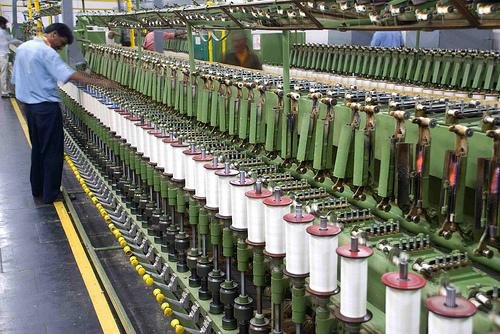Introduction
Kolhapur is widely known for its rich culture, historical legacy, and divine temples, but there’s another side to this city that’s weaving a powerful narrative — its booming textile industry. Situated in the heart of Western Maharashtra, Kolhapur is becoming a major hub for fabric manufacturing, supported by thousands of power looms, skilled labor, and growing demand for quality textiles across India and abroad.

https://im.hunt.in/cg/mah/Kolhapur/City-Guide/Textile_industry_Kolhapur.jpg
The Roots of Kolhapur’s Loom Legacy
The textile tradition in Kolhapur dates back decades. Initially, it started as a small-scale handloom-based craft passed down through generations. However, the introduction of power looms brought a massive transformation, turning Kolhapur into an industrial powerhouse.
Today, areas like Ichalkaranji — often referred to as the “Manchester of Maharashtra” — and nearby regions are home to over 1 lakh looms, producing everything from cotton and polyester blends to premium jacquard fabrics.
What Makes Kolhapur a Textile Powerhouse?
1. Skilled Workforce
Generations of families have been involved in weaving and loom operations. This heritage has resulted in a highly experienced and dependable workforce, which is one of the major reasons for the industry’s success.
2. Cluster-Based Development
Kolhapur’s textile industry benefits from its tightly knit network of loom owners, weavers, dyeing units, and finishing centers. These clusters ensure efficient production and reduced logistics cost.
3. Access to Raw Materials
Proximity to cotton-growing regions like Vidarbha and Karnataka ensures a steady supply of raw cotton at competitive prices, facilitating large-scale fabric manufacturing.
4. Supportive Infrastructure
Kolhapur boasts a robust infrastructure with access to electricity, water, and industrial land that is crucial for the operation of textile factories and power looms.
The Role of Technology in Modernizing Kolhapur’s Looms
Modern automatic and semi-automatic looms are gradually replacing traditional manual machines. This shift not only increases production capacity but also improves fabric quality.
Many loom owners have started investing in:
- Computerized Jacquard Looms for intricate design patterns
- Digital yarn monitoring systems
- Eco-friendly dyeing technology to reduce water usage
These innovations have made Kolhapur a reliable supplier for major fashion brands and export houses.
Major Textile Products Manufactured in Kolhapur
- School Uniform Fabrics
- Cotton Suiting and Shirting
- Bed Linen and Towels
- Denim and Twill Fabrics
- Polyester-Cotton Blends
- Designer Saree Materials
This variety enables Kolhapur’s textile businesses to cater to both local and international markets.
Economic Impact and Employment
The Kolhapur loom industry provides direct and indirect employment to over 2 lakh people, making it one of the biggest employment generators in the region. From loom operators and machine technicians to transporters and packaging staff, the industry’s growth supports a diverse workforce.
Challenges Faced by the Textile Industry
Despite its success, the loom sector in Kolhapur faces challenges:
- Rising Electricity Costs
- Global Competition from Bangladesh and China
- Lack of R&D investment
- Need for Environmental Compliance in dyeing units
Government support through subsidies, training programs, and policy reforms are vital to address these issues.
Future Prospects: Kolhapur as a Global Textile Exporter
Kolhapur’s textile sector is actively working on building export capabilities, with many manufacturers setting up export-oriented units (EOUs). Participation in international trade fairs and textile expos is opening new markets in the Middle East, Africa, and Southeast Asia.
Additionally, tie-ups with fashion designers and online platforms are helping Kolhapur’s loom products reach urban consumers more effectively.
Government Schemes and Industrial Support
Several initiatives are driving the development of the textile business in Kolhapur:
- Technology Upgradation Fund Scheme (TUFS)
- Cluster Development Programs
- Skill India initiatives for weavers
- Subsidized loans for loom modernization
These programs are playing a key role in sustaining and expanding the power loom sector in the region.
Voices from the Ground
Shankar Patil, a third-generation loom operator, says:
“We started with handlooms and now run 12 power looms with automatic machines. The demand for our fabric is coming from Mumbai, Delhi, and even Dubai. It’s not just a business, it’s our identity.”
Conclusion
Kolhapur’s textile and loom industry is a shining example of how tradition and technology can coexist. With continued innovation, government backing, and entrepreneurial spirit, Kolhapur is poised to become not just a regional hub but a national leader in fabric manufacturing.
As the world seeks sustainable and high-quality textile solutions, Kolhapur’s looms are ready to weave their mark globally — thread by thread, meter by meter.

